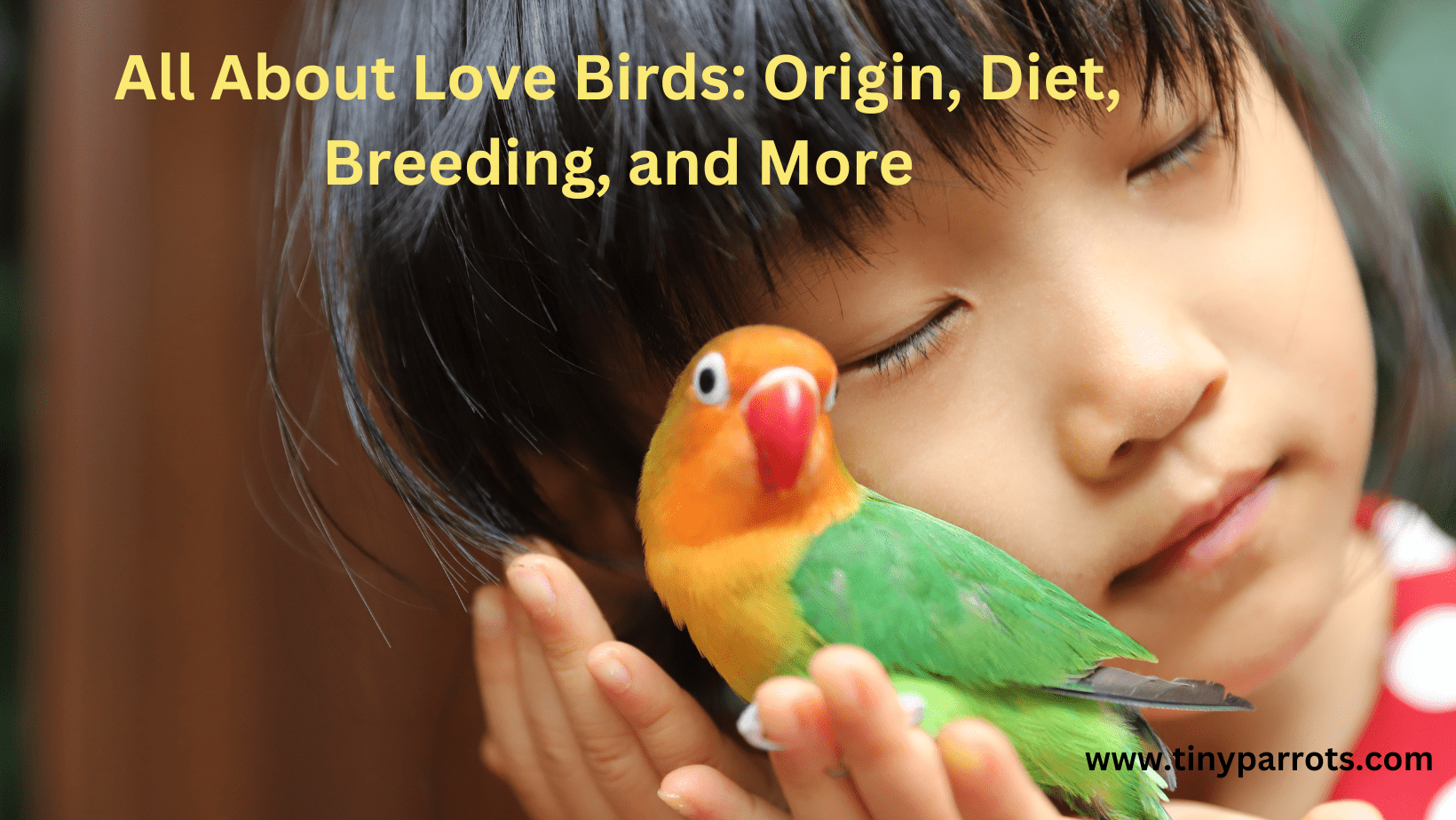Introduction
Welcome to the enchanting world of love birds! These delightful little parrots are a favorite among bird enthusiasts and pet owners, thanks to their vibrant colors, charming personalities, and loving nature. In this article, we’ll delve into every aspect of love birds, from their fascinating origins to their dietary preferences, breeding habits, and so much more. Whether you’re a seasoned lovebird enthusiast or just starting to explore the world of avian companions, you’re in for a treat. Let’s embark on this journey to discover all there is to know about lovebirds.
Now, let’s dive into each of these sections and explore the world of love birds in more detail.
The Origins of Love birds
Love birds, scientifically known as Agapornis, belong to the parrot family, and their name reflects their affectionate and monogamous nature. These charming birds are native to the African continent, primarily inhabiting regions like Madagascar, the Seychelles, and nearby islands. With their captivating colors and social behavior, love birds have captured the hearts of bird lovers around the world.
Meet the Lovebird Species
There are nine different species of lovebirds, each with its unique characteristics and colors. The Peach-faced Lovebird, Fischer’s Lovebird, and Masked Lovebird are all popular species. These birds come in various shades, from vibrant greens to mesmerizing blues, making them a true spectacle to behold.
Dietary Delights: What Do Love birds Eat?
Lovebirds are not particularly finicky eaters. Their diet mainly consists of fruits, vegetables, seeds, and the occasional insect for added protein. To keep your lovebird healthy and happy, make sure to offer a balanced diet that includes a variety of fresh foods.
The Joy of Keeping Love birds as Pets
Keeping lovebirds as pets is a truly rewarding experience. Their small size, vibrant plumage, and loving personalities make them great companions. Lovebirds are known for forming strong bonds with their owners and often enjoy snuggling and cuddling. They may be small in stature, but they have enormous hearts full of affection.
Lovebirds: The Language of Love
One of the most endearing characteristics of love birds is their ability to communicate their emotions. These birds are not just chirping away; they are actually expressing their feelings. Whether it’s a lovebird’s joyful chirps or affectionate preening, they have a unique way of sharing their love.
Love in the Air: Breeding and Reproduction
Love birds are renowned for their monogamous relationships, forming deep emotional bonds with their mates. When it comes to breeding, they are dedicated parents, and their courtship rituals are a sight to behold. They often engage in mutual feeding and preening, reinforcing the strength of their bond.
A Colorful World: Lovebird Varieties
The world of lovebirds is incredibly colorful and diverse. Various lovebird species and mutations offer a wide range of color variations, from striking yellows and reds to subtle pastels. These variations make lovebirds one of the most visually captivating parrot species.
Caring for Your Lovebird: Health and Happiness
Ensuring the well-being of your lovebird is of utmost importance. Regular health check-ups, a spacious and stimulating environment, and a balanced diet are essential for keeping your feathered friend in prime condition. These steps guarantee a happy and healthy life for your pet.
Lovebirds and Their Lifespan
The average lifespan of a lovebird ranges from 10 to 15 years, depending on the species and the quality of care provided. With proper nutrition, social interaction, and a loving environment, you can maximize the years you spend with your cherished lovebird companion.
Fascinating Lovebird Facts
Before we conclude our lovebird journey, let’s explore some captivating lovebird facts:
- Lovebirds are among the smallest parrots, measuring only 5 to 7 inches in length.
- These birds are not just good at mimicking sounds; they can also learn a few words and phrases.
- Lovebirds are incredibly acrobatic, often hanging upside down and swinging from their perches.
- They are very sociable birds who like interacting with their owners.
- In the wild, lovebirds can form flocks of up to 30 birds.
Conclusion
In the realm of avian wonders, lovebirds hold a special place. Their charm, affectionate nature, and captivating colors make them a beloved choice for bird enthusiasts and pet owners alike. Whether you’re drawn to their rich history, their vibrant personalities, or their fascinating breeding habits, lovebirds offer a unique and rewarding experience. So, if you’re contemplating adding a little lovebird magic to your life, you won’t be disappointed.
FAQs
- Do lovebirds make good pets for beginners?
- Absolutely! Lovebirds are known for their friendly disposition and adaptability, making them a great choice for novice pet owners.
- What is the ideal cage size for a lovebird?
- A spacious cage, preferably a minimum of 24x18x18 inches, is essential to provide your lovebird with room to move, exercise, and play.
- Can lovebirds live alone, or do they need a companion?
- Lovebirds are social birds and thrive in the company of their own kind. Having a companion lovebird is highly recommended for their emotional well-being.
- How can I tell if my lovebirds are ready to breed?
- Watch for behaviors like mutual preening, increased affection, and nesting activities as signs that your lovebirds are ready for breeding.
- What should I do if my lovebird shows signs of illness?
- If you notice any unusual behaviors or signs of illness in your lovebird, it’s crucial to consult with an avian veterinarian for a proper diagnosis and treatment.
With these frequently asked questions answered, you’re well-equipped to embark on your journey with lovebirds. These delightful little birds will surely bring joy and love into your life, just as they have for countless others. So, spread your wings and explore the world of lovebirds with all the love and care they deserve.
